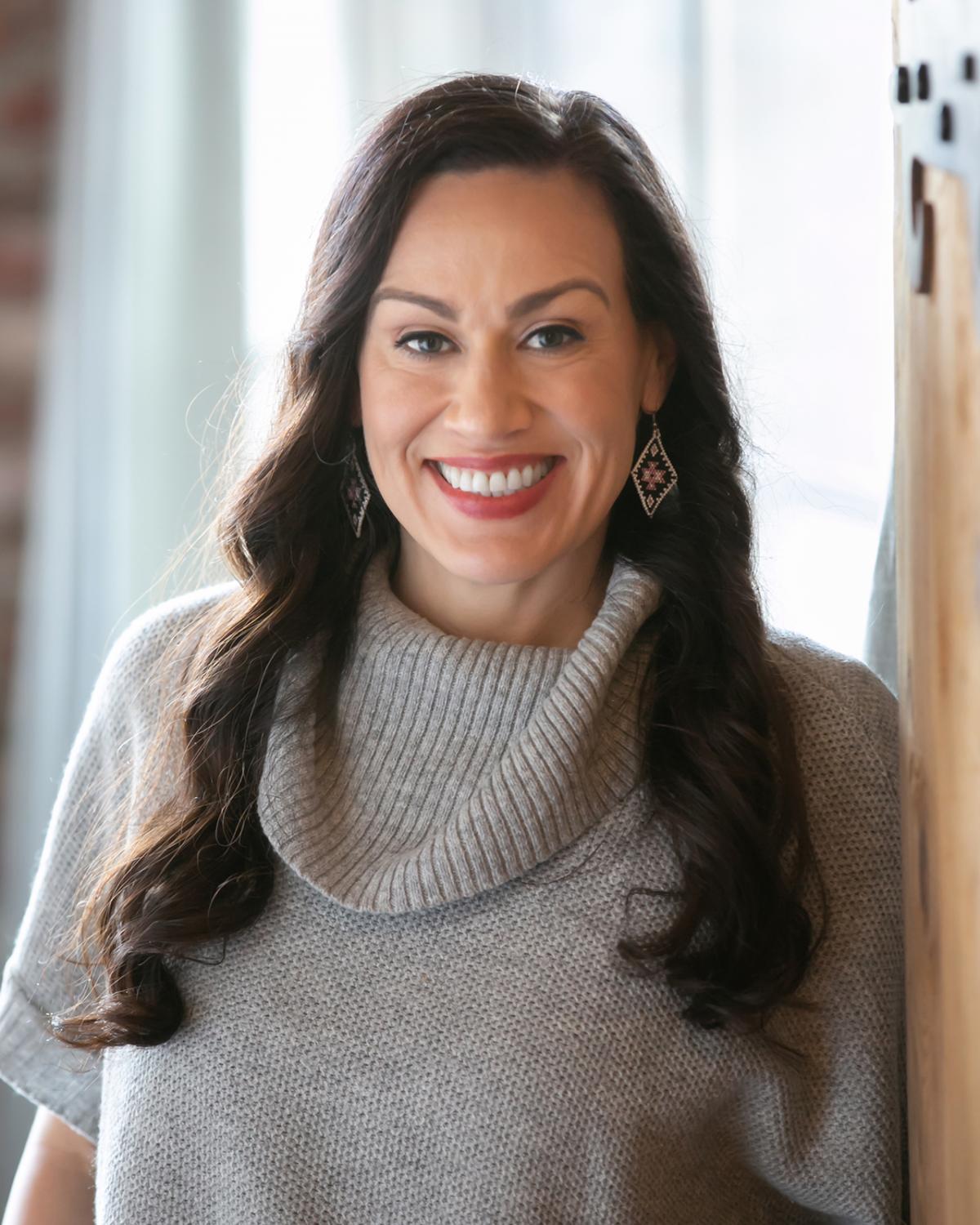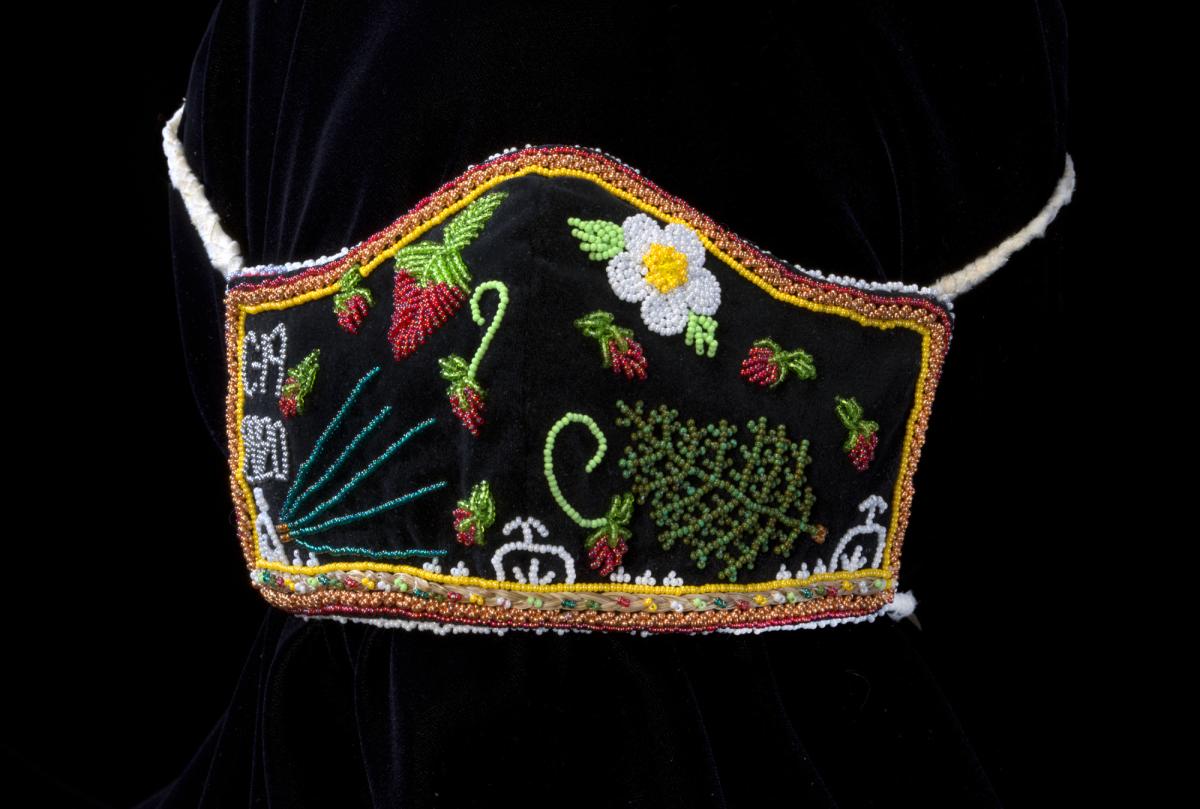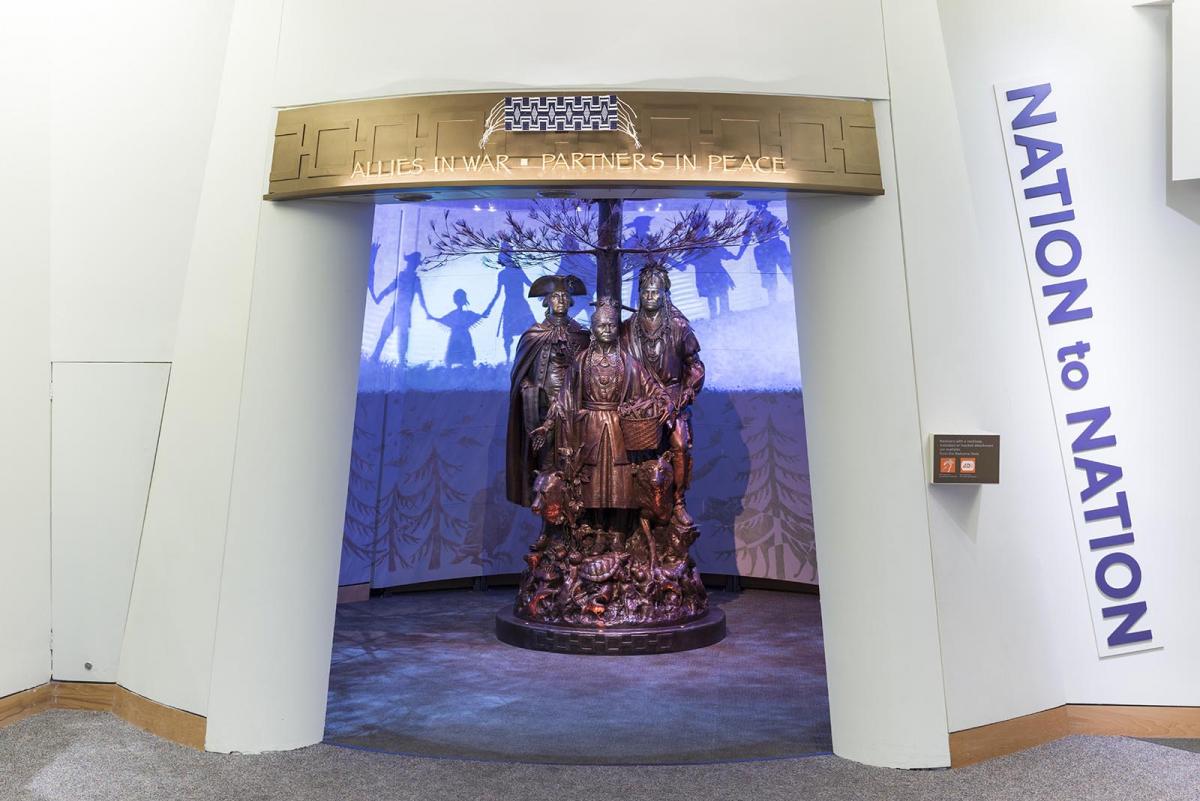This is part of an ongoing series of interviews with all the curators hired as part of the Smithsonian American Women’s History Initiative, Because of Her Story. Sara Cohen is the digital audiences and content coordinator for the initiative. She shares lesser-known histories of women through the Because of Her Story website and newsletter, and Smithsonian social media.
As a curator at two museums at once, Anya Montiel occupies a rare position at the Smithsonian. She works as the curator of American and Native American women’s art and craft. This is a joint position between the Smithsonian American Art Museum (SAAM) and the National Museum of the American Indian (NMAI). Montiel ensures Native American women’s history is included by acquiring artworks for the museums’ collections, writing scholarly publications, and organizing exhibitions, and more.
Sara Cohen: What is it like to work for both the Smithsonian American Art Museum and the National Museum of the American Indian?
Anya Montiel: Working between two museums has been really rewarding, because I am able to assist with projects and exhibitions at both. Also, I have proposed new art acquisitions for the two museums. For example, SAAM and NMAI have acquired face masks made by Native artists of the United States, Canada, and Mexico. Those masks will help future visitors understand responses to the COVID-19 pandemic. Maybe these masks will be seen by people 100 years from now!
To share these masks with the public, I wrote about the face masks for SAAM’s blog and spoke about them in an online program organized by SAAM with two Smithsonian curators from the National Museum of American History and the National Museum of the American Indian. We spoke about the medical history of face masks and the impact of COVID-19 on Indigenous communities in the United States. These are some of many ways we are sharing our work with visitors during the pandemic.
SC: What’s one women’s history story you wish more people knew?
AM: At NMAI, there’s a statue inside the museum, called “Allies in War, Partners in Peace.” The bronze statue depicts three people, with a woman in the center. I was a lead cultural interpreter at the NMAI beginning in 2007. I led daily tours of the exhibitions to the public and school groups. When I stopped at this statue, visitors would often assume the woman was Pocahontas. When you ask people about Native American women, many only know the name Pocahontas—and maybe Sacagawea.
They don’t know that there have been countless Native women who shaped American history. The woman in the statue is Polly Cooper of the Oneida nation. She traveled more than 400 miles from central New York to Valley Forge, Pennsylvania, during the Revolutionary War, to deliver food to General George Washington’s starving troops. She wanted to make sure that all the soldiers were fed. The Colonial Army tried to pay her for her service, but she refused. She did accept a gift of a shawl and bonnet from Martha Washington. Polly Cooper’s descendants continue to treasure those gifts hundreds of years later. Once visitors learned about her, they realized how much is missing from history books about the contributions of Native American women and women in general.
SC: Was there a moment that changed how you think of women’s history?
AM: When I was in college, I took a class called History of American Women. I was excited to learn more about American history. While I enjoyed the class, it wasn’t what I’d hoped. The professor only spoke about the history of European American and African American women. There were no Native American, Asian, Latinx, or other women included. I couldn’t understand why a class would exclude entire groups of women. I realized that the professor and I had different ideas of what historical moments and women mattered. That experience pushed me towards my research in Native American Studies, because there are many women who continue to be missing from school textbooks and class lectures. Their stories need to be researched, recorded, and told.
SC: How does your work at the Smithsonian change what people understand about American women’s history?
AM: My first work week coincided with the opening of the exhibition, Hearts of Our People: Native Women Artists, at SAAM’s Renwick Gallery. The exhibition featured artwork by more than 100 Native women artists across North America. The exhibition’s catalogue points out that, “much if not most Native art is made by women.” I had never thought about it that way, but it is true! When people see Native baskets, pottery, clothing, beadwork, and other items in museums, most of those works were made by women. This is especially true for older artworks.
Unfortunately, the names of those women were not recorded. The labels often have a general description, such as “blanket (Navajo).” Through an exhibition like Hearts of Our People, visitors walk through the gallery and visualize Native women as master artists. They better understand how Native women are the art teachers of younger generations. Women are the creators and innovators of these art forms.
SC: What would you say to a middle school student interested in learning more about women’s history?
AM: If students want to learn more about women’s history, I would advise them to read books about women and by women authors. If you want to read books about Native Americans and Native girls and women, the American Indian Library Association gives awards to the best young adult books. I always go to that website before recommending books for younger readers.
# # #
Learn more about Native American history and craft:
- Five Native American Artists, in Their Own Words
- Hearts of Our People: Native Women Artists, an exhibition presented by the Smithsonian American Art Museum at its Renwick Gallery
- Pocahontas, Queen of America from the National Museum of the American Indian
The Smithsonian American Women's History Initiative, Because of Her Story, funds curators to research and share women's history at museums and centers across the Smithsonian. To support more women's history research, you can sign up for our newsletter to stay in touch. You can also donate to the Smithsonian American Women's History Initiative.





















